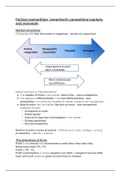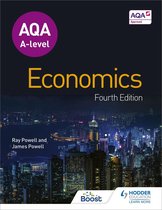Summary
Summary Perfect competition, imperfectly competitive markets and monopoly
- Institution
- AQA
These notes provided a detailed insight into the topic of Perfect competition, imperfectly competitive markets and monopoly. This is perfect for an AQA Economics A Level student. This file breaks down the content in order for it to be fully absorbed. It finds the perfect balance between bullet poin...
[Show more]




